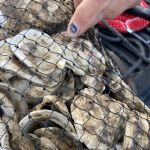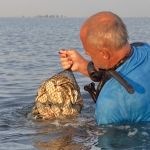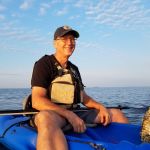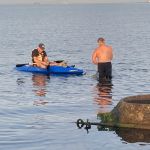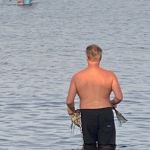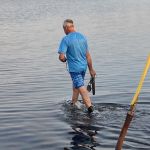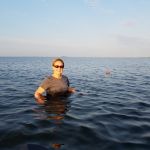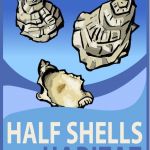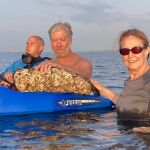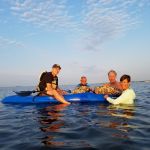Great South Bay Oyster Project
Photo Gallery
Recent Progress
Volunteer
Habitat Restoration

Habitat Restoration
We advocate for healing the creeks that feed our bay, for bay-friendly yards, for helping to return a shellfishing industry to the Great South Bay, and for the deployment of modern wastewater treatment technologies to address the problems caused by 500,000 cesspools and septic tanks, as well as the 197 large scale septic systems in malls, apartment complexes and locally.
Volunteer
Lend a hand! Join our Oyster Project Team and help revive The Great South Bay.
Partnering With Oyster Growers
Of course, nothing happens without cleaner water. That is why getting rid of our cesspools and septic tanks, healing our creeks, tackling runoff, and practicing natural lawn care is so important.
Please contact us with any suggestions you may have. You can also donate our efforts. We want to apply the latest techniques in aquaculture to revitalize our bay, our economy and our local culture.
We advocate for healing the creeks that feed our bay, for bay-friendly yards, for helping to return a shell fishing industry to the Great South Bay, and for the deployment of modern wastewater treatment technologies to address the problems caused by 500,000 cesspools and septic tanks, as well as the 197 large scale septic systems in malls, apartment complexes and locally.
Where You Can Get Fresh, Long Island Blue Point Oysters
- Neguntatogue Oysters (Lindenhurst) – call or text Keith & Nicole at 631-275-8046
- Blue Island Oysters (Sayville)- Call Chris at (631) 563-1330 for availability
- Maris Stella Oysters (Captree) – call or text Sixto at 516-939-5545
- Little A’s (Bay Shore) – call or text Michael at 917-526-1900
- Red Tiger (West Islip) – call or text Lou at 646-228-6273
The Making Of An Oyster Sanctuary
Site Evaluation
Establishing the Sanctuary
Enhancing and Measuring for Success
Recent Progress On Habitat Restoration
At The Breach, and The Fishing is Fine!
News12 to Air FIve Part Series on Long Island Water Quality — What’s In The Water (Sept 23rd through 27th)
This series — which runs from Monday the 23rd of September to Friday the 27th with a one hour live special Thursday the 26th 7-8 — is an admirable effort on the part of News12 and its President Pat Dolan, as well as all the scientists within The Long Island Clean Water Partnership and others to bring to light the challenges we face collectively as Long Islanders when it comes to assuring our water quality and our way of life for future generations. The problems are immense, but the solutions are there, if we decide, together on this island we call home, to take action. Our children and grandchild should also fish, swim, clam, and sail as we had, and Long Island should remain a place where people raise their families knowing the water is safe to drink and the environment is a healthy one. News12 understands the urgency, as does the 125+ organizations that make up The Long Island Partnership for Clean Water.
The Long Island Clean Water Partnership Announced / What You Can Do
As New York continues to recover from Sandy and rebuilds, we are now also faced with a Long Island that is rapidly becoming unlivable due to nitrogenous waste in the ground water, the 117 pesticides in our drinking water, and the pharmaceuticals we throw away or flush down the toilet. The nitrogenous waste is from septic tanks and from lawn fertilizers, from the over 195 small sewage treatment plants scattered across the island, and from antiquated or crippled sewage treatment plants like the one in Bay Park, damaged severely by Sandy.
How Can I Help Save Long Island’s Waters?
Start using lawn and agricultural fertilizers that are eco-friendly, that don’t pollute our groundwater, drinking water and bays with excess nitrogen and phosphorus. The excess nitrogen has been contributing to brown tide, red tide, rust tide, red tide and blue green algae, and these have been killing our bays and in some cases rendering the water toxic. Click here to see what Nitrogen Free recommends for lawn care as they work to support Save Barnegat Bay. What ever bay we are speaking of, on Long Island or not, the issues are the same — too much nitrogen in the groundwater from fertilizer and septic seepage leading to algal blooms and dying bays.
August 19th — SCERP’s News Release on “Rust Tide”
Rust Tide – toxic to marine life – is back in our eastern bays. Groundwater polluted by septic tank seepage is to blame. The New Inlet seems to be protecting the GSB from it, however, by helping to flush the nitrogenous waste laden water out.
Our bays can’t take much more of this
The Breach Report, 8-13-13: So What Are We To Call It? The Breach, The Old Inlet, The New Inlet?
As we began to learn about the breach, how barrier beaches in fact behave and evolve, and began to see how it was actually a lifeline for an otherwise dying bay, saw that it was flushing Bellport Bay especially, and bringing back the bay we knew, we began to use the term ‘breach’ ironically. “Life’s a Breach!” reads one bumper sticker. Against all the hysteria leveled at it, people posted ‘The Breach ate my baby!,’ or ‘The Breach cheats at golf,’ or ‘The Breach stole my woman!” We will be having a Breach Party this Saturday in fact, keeping with the spirit of this.

